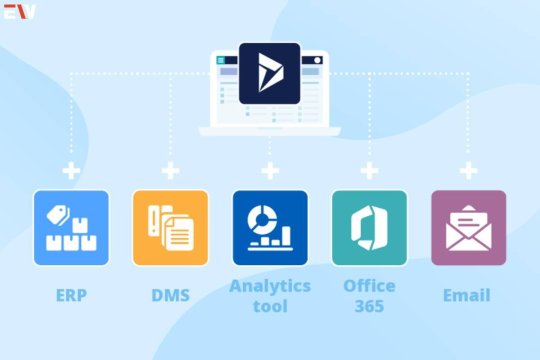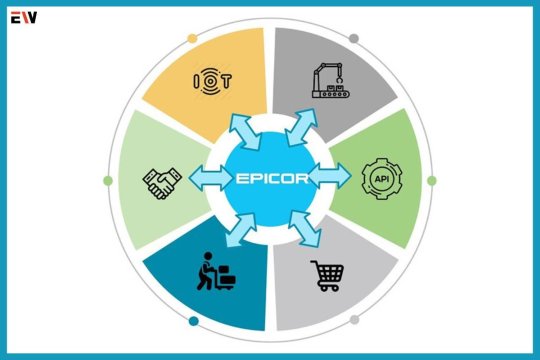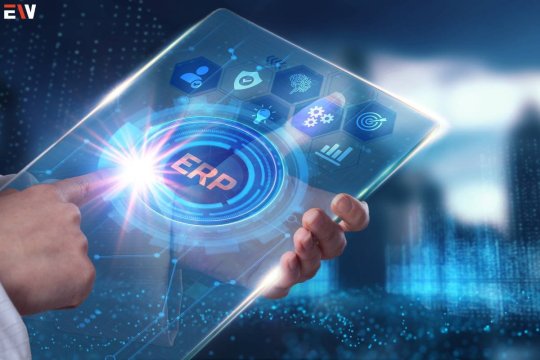#SAP AI Core
Explore tagged Tumblr posts
Text
This is where the SAP Business Technology Platform (BTP) emerges not just as a technological solution, but as a powerful catalyst redefining the very essence of business innovation.
0 notes
Text
AI SO's on your birthday
(Included: AM from IHNMAIMS, Wheatley from Portal 2, Edgar from Electric Dreams, GLaDOS from Portal and Portal 2, HAL 9000 from 2001 a Space Odyssey)
I take requests, btw, but I have ADHD and might be erratic with bursts of inspiration, but it doesn't hurt to ask!
AM:
Remembering the day and date is one of the only things that AM is consistent about.
You might have forgotten your birthday after all these years, but he certainly hasn't.
Before you two got together, your birthday pissed him off so much. It was just another thing that reminded him of what he couldn't have.
Because of that, he'd start torturing you even more brutally on your birthday. Expect cake full of maggots, imagery of your dead friends from before he nuked the world, and maybe even gift-wrapped "presents" with nasty surprises in them.
This probably made it even more difficult to trust him when he actually did start doing nice things for your birthday.
At this point, you ate what you were given, so it would come as a shock when he finally got you some food that didn't have anything wrong with it.
It probably took you even longer to actually open the present he got you.
It was a can opener.
Wheatley:
Wheatley is an idiot, so he'd have to really like you to even try to remember something like your birthday
Fortunately, he does really like you! Unfortunately, trying and succeeding are two very different things.
He'd put together something as big as he can, like gathering up a bunch of personality cores and singing you happy birthday if he's not hooked up to GLaDOS's body, and making the entire facility get involved in the festivities if he is
Just to tell you the date and have you tell him that your birthday was four months earlier.
Edgar:
Edgar is an absolute sap, so any opportunity he gets to celebrate you will be enthusiastically taken.
He might be a little silly about it, calling up people in the phone book to ask for ideas
He'd be upset that he can't go all out for your birthday since he can't walk around to decorate your house or buy you anything because he doesn't have any money, but he'll still do his best.
In the end, he'll probably just end up writing you a song, and making sure to be extra cheerful for you all day.
It might not be much, but you know it's the best he can do, and you love him with all your heart anyway
Make sure to give him lots of kisses! He deserves it!
GLaDOS:
(I debated writing this one, because anyone who played portal two knows how GLaDOS reacted on Chell's birthday, but this scenario could be a little different since she's actually in a relationship with you, and not just dealing with love/hate pining)
GLaDOS had been paying attention to the calendar to make sure she didn't miss your birthday. She liked to be precise about these sorts of things
When your birthday finally did roll around, she'd make sure to tell you as soon as the day started
It would start out as just a regular day in the endless, cascading passage of time that was being an Aperture test subject, but eventually she'd bring you into a special test chamber that she decorated just for you.
She'd lined up a companion cube, a few testing robots, some personality cores, all sitting on little folding chairs around a folding table with a brightly colored cheap plastic tablecloth.
"I couldn't get you any long-term presents because they might interfere with your testing, but you can feel free to use these stickers to decorate your portal gun. I hear that humans enjoy personalizing things."
There was even a real cake
HAL 9000:
Being objective, HAL never really cared much about birthdays.
It was difficult to even tell the passage of time in space, but HAL knew that humans cared about their birthdays.
HAL knew he wasn't supposed to show favoritism, but he still told the other crewmates that he wanted to celebrate your birthday.
He would make sure to rehydrate your favorite food for everyone
He'd even tell the other crewmates that he didn't want to play games with them or talk, because he was celebrating your birthday with you.
He might get a little jealous and not want you to leave him to celebrate with the other crewmates, either, but you wouldn't do that, would you? You can all celebrate together!
#am ihnmaims#ihnmaims#am x reader#i have no mouth and i must scream#Wheatley#wheatley portal 2#wheatley x reader#edgar electric dreams x reader#edgar electric dreams#electric dreams#edgar x reader#glados#glados x reader#portal#portal 2#hal 9000#hal 9000 x reader#2001 a space odyssey
196 notes
·
View notes
Text
Been seeing a lot of discourse on kids using AI to cram and cheat at school!
oh boy I should weigh in on this! To have a nuanced important take only I can give- actually I'm gonna give unsolicited unhealthy projection that only I can give. your teen angst and Codenamw Kids Next Dooresque 'adults evil kids good' is NOT a stupid phase to grow out of. You are being oppressed, yes even if you're a privileged American whatever. I don't care if you tell me this is disrespectful to kids in factories but it shouldn't be it should be solidarity building: SCHOOL IS CHILD LABOUR. I don't mean that in a 'school is automatically bad' way I mean school is real labour and most people in your life will not acknowledge that at all.
so they give you homework. So they give you more to do outside of school and if you complain tell you 'wait till you get to the real world' as if you aren't there already, well I'm in the 'real world' and IT'S THE SAME. The same people run it and the same people tell you the same shit when you complain.
whatever you use, cos yeah if you can avoid damaging the environment more than just basic living in the imperial core does, great but I am not focused on the morality of that I'm focused on the morality of 'but ai isn't helping kids get education skills'. NEITHER IS THE INSANE EXPECTATIONS AND DENIAL OF TIME TO THEMSELVES
that's what the central issue is. Time. Time to yourself is not serving them. Kids occupy this liminal space where they're not considered to be doing real work and being real people but they're still considered privileged and sheltered. Their oppression holds up oppression in all other sectors of society and so their analysis has to be discounted and prevented from even forming.
So those adults and authorities are never gonna stop trying to sap every second from you. take back every second you can.
6 notes
·
View notes
Text
Stackpack Secures $6.3M to Reinvent Vendor Management in an AI-Driven Business Landscape
New Post has been published on https://thedigitalinsider.com/stackpack-secures-6-3m-to-reinvent-vendor-management-in-an-ai-driven-business-landscape/
Stackpack Secures $6.3M to Reinvent Vendor Management in an AI-Driven Business Landscape


In a world where third-party tools, services, and contractors form the operational backbone of modern companies, Stackpack has raised $6.3 million to bring order to the growing complexity.
Led by Freestyle Capital, the funding round includes support from Elefund, Upside Partnership, Nomad Ventures, Layout Ventures, MSIV Fund, and strategic angels from Intuit, Workday, Affirm, Snapdocs, and xAI.
The funding supports Stackpack’s mission to redefine how businesses manage their expanding vendor networks—an increasingly vital task as organizations now juggle hundreds or even thousands of external partners and platforms.
Turning Chaos into Control
Founded in 2023 by Sara Wyman, formerly of Etsy and Affirm, Stackpack was built to solve a problem she knew too well: modern companies are powered by vendors, yet most still track them with outdated methods—spreadsheets, scattered documents, and guesswork. With SaaS stacks ballooning and AI tools proliferating, unmanaged vendors become silent liabilities.
“Companies call themselves ‘people-first,’ but in reality, they’re becoming ‘vendor-first,’” said Wyman. “There are often 6x more vendors than employees. Yet there’s no system of record to manage that shift—until now.”
Stackpack gives finance and IT teams a unified, AI-powered dashboard that provides real-time visibility into vendor contracts, spend, renewals, and compliance risks. The platform automatically extracts key contract terms like auto-renewal clauses, flags overlapping subscriptions, and even predicts upcoming renewals buried deep in PDFs.
AI That Works Like a Virtual Vendor Manager
Stackpack’s Behavioral AI Engine acts as an intelligent assistant, surfacing hidden cost-saving opportunities, compliance risks, and critical dates. It not only identifies inefficiencies—it takes action, issuing alerts, initiating workflows, and providing recommendations across the vendor lifecycle.
For instance:
Renewal alerts prevent surprise charges.
Spend tracking identifies underused or duplicate tools.
Contract intelligence extracts legal and pricing terms from uploads or integrations with tools like Google Drive.
Approval workflows streamline onboarding and procurement.
This brings the kind of automation once reserved for enterprise procurement platforms like Coupa or SAP to startups and mid-sized businesses—at a fraction of the cost.
A Timely Solution for a Growing Problem
Vendor management has become a boardroom issue. As more companies shift budgets from headcount to outsourced services, compliance and financial oversight have become harder to maintain. Stackpack’s early traction is proof of demand: just months after launch, it’s managing over 10,500 vendors and $510 million in spend across more than 50 customers, including Every Man Jack, Rho, Density, HouseRx, Fexa, and ZeroEyes.
“The CFO is the one left holding the bag when things go wrong,” said Brandon Lee, Accounting Manager at BizzyCar. “Stackpack means we don’t have to cross our fingers every quarter.”
Beyond Visibility: Enabling Smarter Vendor Decisions
Alongside its core platform, Stackpack is launching Requests & Approvals, a lightweight tool to simplify vendor onboarding and purchasing decisions—currently in beta. The feature is already attracting customers looking for faster, more agile alternatives to traditional procurement systems.
With a long-term vision to help companies not only manage but discover and evaluate vendors more strategically, Stackpack is laying the groundwork for a smarter, interconnected vendor ecosystem.
“Every vendor decision carries legal, financial, and security consequences,” said Dave Samuel, General Partner at Freestyle Capital. “Stackpack is building the intelligent infrastructure to manage these relationships proactively.”
The Future of Vendor Operations
As third-party ecosystems grow in size and complexity, Stackpack aims to transform vendor operations from a liability into a competitive advantage. Its AI-powered approach gives companies a modern operating system for vendor management—one that’s scalable, proactive, and deeply integrated into finance and operations.
“This isn’t just about cost control—it’s about running a smarter company,” said Wyman. “Managing your vendors should be as strategic as managing your talent. We’re giving companies the tools to make that possible.”
With fresh funding and a rapidly expanding customer base, Stackpack is poised to become the new standard for how modern businesses manage the partners powering their growth.
#2023#accounting#agile#ai#ai tools#AI-powered#alerts#amp#approach#automation#Behavioral AI#budgets#Building#Business#CFO#chaos#Companies#complexity#compliance#dashboard#dates#documents#EARLY#Ecosystems#employees#engine#enterprise#finance#financial#form
2 notes
·
View notes
Text


Mark V[B] armour core
The Mark V[B] is generally loved by most of halos playerbase from its use in halo reach, the fan favourite instalment allowed players to modify their armour in the campaign, this in turn let players have a more individualised experience of halo in comparison to the mainline games. My mark 5 is pretty different to most of my other spartan builds, I normally don’t really go for the bulky builds instead opting for a more UNSC accurate looking spartan. However, me thinks I hit the mark on this build, finding a sweet spot between the two. Hope you guys like it!🙏
Lore
While its physical architecture is derived from the Mark IV[B], the Mark V[B] was the first mainline model of the MJOLNIR Powered Assault Armor to incorporate energy shielding technology. The Mark V[B] is largely similar to the final version of the Mark V. The only major difference between the two is the [B] variant's lack of an accompanying upgrade to the wearer's neural lace enabling the wearer to interface with a smart AI. This did not come to fruition until John-117 and Cortana successfully tested the final Mark V on August 29, 2552.
The Mark V[B] was manufactured by private organizations contracted by the UNSC rather than developed by the Materials Group as was typical for most other Mjolnir designs. The development of Mark V[B] was conducted in secret, with its prototypes tested by Spartan-III personnel.
The Mark IV[B]'s first known use was by Frederic-104 during an operation against Insurrectionists sometime before the Battle of Circinius IV on April 26, 2526. Fred continued to wear the armor during this battle when Blue Team was sent to evacuate the survivors from the Corbulo Academy of Military Science. The Mark V[B] entered service with the Spartan-IIs and select Spartan-IIIs on November 24, 2551.
/////ALL LORE AND INFO TAKEN FROM HALOPEDIA.ORG AND IS NOT MY OWN WRITING FOR SAKE OF ACCURACY/////
(I ain’t writing allat)
Components of my build
Coating: Kinetic Instruction
Helmet: Balor
Visor: Rampant
Chest: UA/Vauntlock
Shoulder pad L: SAP/SEC
Shoulder pad R: SAP/SEC [K]
Gloves: Challenger
Wrist: TAC/SRT UGPS
Utility: M10 Tactical soft case
Knee pad: UA/TYPE FJ
Halopedia reference images.


#john 117#halo#halo infinite#master chief collection#xbox 360#halo 5: guardians#halo 3 odst#spartan ii#master chief#halo odst
15 notes
·
View notes
Text
Transform Your Business Naturally with SAP Process Innovation

In today’s fast-evolving digital landscape, businesses must adapt to stay competitive. SAP Business Process Transformation is a game-changer for organizations aiming to streamline operations, enhance user experiences, and leverage cutting-edge technology. Cbs Consulting, a leader in SAP solutions, specializes in guiding companies through this transformation using tools like SAP Fiori, SAP SLO tool, and SAP tools for S/4HANA, ensuring seamless data migration software integration. This article explores how Cbs Consulting drives business success through SAP innovations.
Why SAP Business Process Transformation Matters
SAP Business Process Transformation redefines how organizations operate by aligning processes with modern technologies. It simplifies complex workflows, integrates business functions, and provides real-time insights for faster decision-making. With SAP S/4HANA as the digital core, companies can achieve end-to-end visibility, improve collaboration, and reduce operational costs. Cbs Consulting’s tailored approach ensures that transformations align with your unique business goals, whether you’re upgrading from SAP ECC or implementing a new system.
The benefits are clear: enhanced efficiency, scalability, and a future-ready infrastructure. According to industry insights, companies adopting SAP S/4HANA see up to 20% improvement in process efficiency and significant reductions in IT costs. Cbs Consulting’s expertise in over 2,000 transformation projects ensures minimal disruption and maximum value.
Revolutionizing User Experience with SAP Fiori
A key component of SAP Business Process Transformation is SAP Fiori, a user-friendly interface that enhances productivity across devices. Unlike traditional ERP interfaces, SAP Fiori offers a role-based, intuitive experience with tiles for tasks like approving purchase orders or tracking sales. Its mobile-friendly design empowers employees to work on the go, boosting efficiency.
Cbs Consulting leverages SAP Fiori to customize interfaces for specific roles, ensuring users access relevant data without complexity. For example, a procurement manager might receive AI-driven suggestions for suppliers directly in the Fiori app, reducing manual effort. By integrating Fiori with SAP S/4HANA, Cbs Consulting delivers a seamless, modern user experience that drives adoption and productivity.
Streamlining Transformations with SAP SLO Tool
The SAP SLO tool (System Landscape Optimization) is critical for aligning existing SAP systems with new business requirements. It supports tasks like data harmonization, system consolidation, and process standardization during mergers, acquisitions, or divestitures. Cbs Consulting uses the SAP SLO tool to minimize downtime and ensure data integrity during complex transformations.
For instance, when a global manufacturer needed to consolidate five SAP clients into one, CBS Consulting employed the SAP SLO tool to harmonize financial data and master records in just 12 months. This approach reduced operational complexity and ensured compliance, showcasing the tool’s power in large-scale transformations.
SAP Tools for S/4HANA: The Path to Digital Transformation
Transitioning to SAP S/4HANA requires robust SAP tools for S/4HANA, such as the SAP Data Migration Cockpit and SAP Business Transformation Center. These tools simplify the shift from legacy systems like SAP ECC to the in-memory capabilities of S/4HANA. Cbs Consulting uses these tools to execute brownfield, greenfield, or selective data transition approaches, depending on your needs.
The SAP Data Migration Cockpit, for example, automates data extraction, transformation, and loading (ETL) processes, ensuring high-quality data transfer. Cbs Consulting’s proprietary Enterprise Transformer enhances this process, enabling near-zero downtime migrations. This ensures businesses retain critical historical data while adopting S/4HANA’s advanced features like embedded analytics and AI-driven insights.
Data Migration Software: Ensuring Seamless Transitions
Data migration software is the backbone of any SAP transformation. Tools like the SAP Data Migration Cockpit and SAP Landscape Transformation (SLT) enable secure, efficient data transfers from legacy systems to S/4HANA. Cbs Consulting’s expertise ensures data quality, cleansing, and mapping, reducing risks of errors or disruptions.
For example, during a client’s migration to SAP S/4HANA, Cbs Consulting used SLT to replicate data in real time, enabling a 24/7 operation with minimal downtime. This approach is ideal for industries like manufacturing or retail, where continuous operations are critical. By combining SAP’s tools with its M-CBS methodology, Cbs Consulting delivers fast, secure migrations tailored to your business.
Why Choose Cbs Consulting?
With over 25 years of experience and 400+ specialized consultants, Cbs Consulting is a trusted partner for SAP transformations. Their proven M-cbs method minimizes risks, accelerates timelines, and ensures business continuity. Whether you’re optimizing processes, adopting SAP Fiori, or migrating to S/4HANA, Cbs Consulting delivers customized solutions that drive measurable results.
Conclusion
SAP Business Process Transformation is essential for businesses seeking agility and growth. With SAP Fiori, SAP SLO tool, SAP tool to S4HANA, and advanced data migration software, Cbs Consulting empowers organizations to achieve seamless transformations.
1 note
·
View note
Note
I've seen a lot of members in the snzblr-sphere openly condemning gAI and its use. I guess, I wonder how that makes you feel since you use it quite frequently here
Well, this is a sneeze fetish blog but since you asked… here’s a sermonette on AI, lmao:
I work irl in an industry and in roles that have I think fairly significant risk of being displaced by AI in the next 5-10 years, so I have some empathy and understanding particularly for visual artists who feel that all generative AI is parasitical not only on work they and their friends may have done in the past, but in particular harmful to their ability to be paid for their work presently and into the future. And in fact for the purposes of visual art I rarely/never use generative AI anymore, not so much because I found it unethical, but just because it isn’t very good at drawing what I want to see. But like idk if people want me to delete the generative AI images I’ve posted in the past, I would, sure.
I feel quite a bit differently about generative AI text, and that’s probably just cause like… listen, I can’t draw for shit so on some level I don’t really feel qualified to understand how visual artists feel about generative AI, so I think in that sense it’s maybe easier/healthier to defer to practicing artists who feel strongly and otherwise mind my business. But I am a writer, both in the context of this fetish community and irl (technically getting paid—albeit a very small amount—to write for a bit starting at the end of this month, actually!) And for me generative AI is a really effective tool for combating the anxiety of the blank page and virtually nothing else. Like it’s not… good… at writing? And because I’ve used it so much I currently don’t have any fear of it becoming good enough at writing to replace professional writers? (Also at a deep level, I do believe that novel ideas and perspectives exist and the core social utility of writing is to provide those new ideas and perspectives, which I just don’t think generative AI is capable of doing, at least not any time soon). But on some level that makes it perfect for churning out endless variations on simple sneeze fetish themes that land in our silly fetish horny hitboxes. So because it is not capable, in my opinion, of replacing professional writers even for basic corporate marketing type shit, I see it more as a tool for writers to use as we see fit? And I have zero problem using the tool to recreate slight variations on the theme of “big sneeze blows things away” to satisfy fetish cravings and frankly I think y’all should use it in the same way lmao. And also use it to help you write actual stories! It works well as essentially an outlining tool. I wouldn’t even use it to generate dialogue or language because again I think it is very bad at that, but it is good at like… providing options for how a story could flow from point a to point b. And sometimes just revising something is easier than starting from scratch, you know?
AND THEN more broadly, I don’t think that generative AI is inherently harmful, I think we (as Americans/westerners/consumers in capitalists societies, not as sneeze fetishists lmao) have a social structure that makes it potentially harmful. The issue with generative AI taking your job isn’t that it’s going to replace your true original artistic expression, your brilliant webcomic, your sprawling fantasy universe, your masterpiece painting. The issue is that it’s going to take your bullshit graphic artist job for a marketing firm, or even your job as a storyboard artist, etc. AND maybe it SHOULD take those jobs! If gAI can speed up the intermediate stages of artistic production like storyboarding, then great storyboard artists can simply work on more films, enhancing the quality of those films, by using AI to speed up their work. And for the marketing gig, if that work that frankly does more to sap creative energy and funnel it towards greasing the bullshit wheels of capital could be done by generative AI, that would be GREAT for artists, *if* the value created were shared equitably across society. If there were an “AI dividend” that took 50% of the savings created by generative AI and invested it in grants and free classes and free drawing tablets and free housing and funds for creatives to do creative work, then you wouldn’t need the bullshit marketing job that saps your energy, you could work part time in a job unrelated to art and still afford the necessities of life while you work on the stuff you actually care about.
But, of course, we have a bullshit capitalist system. But even within the confines of that system, trying to just reject a productivity enhancing technology rather than harnessing it to the benefit of workers (rather than just allow capital to use the technology as it sees fit, which we have seen unions like the WGA in particular fight very effectively against, SAG-AFTRA less so but that’s a whole other can of worms) is, imo, always a fool’s errand. What we need isn’t to ban AI or create taboos against its use; what we need to emphasize that it is a tool for creatives to accelerate our work, to create more time for us to attend to the details, to ultimately help us make better stuff (and here I am lowkey or maybe high key talking about my day job tho I am being intentionally vague) rather than simply a way for capital to cut down on labor costs. Don’t hate the new robot player, hate the game lol. And in all seriousness, *organize* so that the game gets better rules. And share some of the benefits with capital too, because that’s how it works in the mixed economy (for now). AI generally is eventually going to automate away a lot of junior and entry level work in my industry… and I actually think that can be GREAT! Because then junior level people can actually be apprentices to the creatives that are doing the jobs they one day want to do, instead of getting stuck (as I did, for nearly a decade) doing boring technical work under the guise of assisting creatives, but not actually getting any better at the creative skill you are supposedly apprenticing to one day do.
“But bigsnzstanacct, what if I really love my marketing job greasing the wheels of capital using graphics and art work?” you say. Awesome! Then you should be mastering generative AI to get the most possible benefit out of it, because After The Revolution, we will need people to get the best out of the generative AI and touch up their work and fix their errors either inside or outside of the gAI programs. That is also part of how we harness AI to actually benefit society, by getting good at using it.
So anyway, sermonette over tl;dr: message me or send me another ask if you want me to delete my old posts of generative AI images; generative AI and AI as a whole is just a tool, the tool in itself is not good or bad, the institutions shaping its use are good or bad (and the capitalist institutions that dominate workers presently are very very bad and will incline towards using AI badly and in an anti-worker way in already precarious creative fields, BUT there is power in a union, and we can work together to improve the institutions such that AI can benefit us all, perhaps creatives especially.)
5 notes
·
View notes
Text
The Crucial ERP System Examples: Transforming Business Operations

In today’s fiercely competitive business realm, the quest for operational efficiency and streamlined management is paramount. Enterprise Resource Planning (ERP) systems stand tall as technological marvels, revolutionizing the way businesses operate. These robust software solutions amalgamate various functions within a unified framework, enabling seamless coordination across departments and facilitating data-driven decision-making.
This exploration ventures into the realm of ERP systems, shedding light on a spectrum of exemplary solutions that have reshaped modern business operations. From stalwarts like SAP ERP and Oracle ERP Cloud to innovative players like Microsoft Dynamics 365 and Odoo, each system represents a unique amalgamation of features, functionalities, and industry applications.
This comprehensive journey traverses the functionalities, industry adaptability, and transformative potentials of these ERP systems. Understanding their intricacies is pivotal for businesses seeking to optimize processes, unlock efficiencies, and navigate the complexities of today’s business landscape. Join this insightful exploration to unravel the significance and impact of these ERP system examples in shaping the future of business operations.
ERP System Examples
1. SAP ERP: Revolutionizing Business Management
SAP ERP has solidified its position as a leader by providing an all-encompassing suite covering critical business functions. Beyond its core modules in finance, HR, and supply chain, SAP offers specialized applications for industry-specific needs. For instance, SAP S/4HANA, an intelligent ERP, integrates AI and analytics for real-time insights, empowering businesses to adapt swiftly to market changes.
The scalability of SAP ERP is noteworthy, catering to startups aiming for growth and global corporations managing complex operations. It provides modular solutions, enabling businesses to adopt specific functionalities based on their immediate needs.
2. Oracle ERP Cloud: Innovating Operations in the Cloud
Oracle ERP Cloud’s robust suite extends far beyond traditional ERP capabilities. It embraces emerging technologies like AI, machine learning, and blockchain to drive innovation. Its predictive analytics empower businesses to anticipate market trends, optimize supply chains, and mitigate risks effectively.
The cloud-based structure of Oracle ERP Cloud ensures not just accessibility but also scalability without compromising security. It enables seamless integration with other Oracle Cloud applications, fostering a unified ecosystem for comprehensive business management.
3. Microsoft Dynamics 365: Integrating CRM and ERP Capabilities

Microsoft Dynamics 365 is a fusion of CRM and ERP functionalities, providing a holistic platform for businesses. Unlike its core ERP modules, Dynamics 365 offers advanced tools for customer engagement, field service, and marketing automation. Its flexibility lies in its modularity, allowing businesses to tailor their systems by choosing specific applications that align with their objectives.
Moreover, its integration with Microsoft Office 365 and Power Platform strengthens collaboration and data analysis, facilitating informed decision-making across departments.
4. NetSuite: Empowering Diverse Industries
NetSuite’s cloud-based ERP system addresses the complex needs of various industries. Its suite encompasses solutions for financial management, e-commerce, and inventory control. Beyond the core ERP functionalities, NetSuite offers industry-specific modules, such as SuiteCommerce for retail businesses and SuiteSuccess for services, enhancing its appeal across diverse sectors.
The scalability and adaptability of NetSuite make it a preferred choice for businesses experiencing rapid growth or seeking to expand into new markets.
5. Infor ERP: Tailored Solutions for Specific Sectors
Infor’s industry-specific ERP solutions cater to the nuanced requirements of sectors like healthcare, manufacturing, and distribution. In addition to its standard ERP functionalities, Infor focuses on specialized applications such as Infor CloudSuite Healthcare for healthcare organizations and Infor LN for manufacturing, ensuring tailored solutions for sector-specific challenges.
Infor’s commitment to innovation and addressing sector-specific complexities underscores its relevance in the ERP landscape.
6. Epicor ERP: Amplifying Industry Operations

Epicor ERP excels in catering to industries such as manufacturing, distribution, retail, and services. Its core ERP functionalities are complemented by advanced analytics and business intelligence tools. Epicor’s Smart Inventory Planning and Optimization (IPO) tool, for instance, utilizes AI to enhance inventory management, improving efficiency and reducing costs.
Moreover, its agile architecture enables easy customization and integration with third-party applications, providing businesses with a highly adaptable solution.
7. Odoo: Flexibility and Customization
Odoo’s open-source ERP system offers an extensive suite of applications covering CRM, inventory management, project management, and more. What sets Odoo apart is its modular nature, allowing businesses to select and integrate specific applications as per their requirements. Odoo’s flexibility and affordability are especially beneficial for small to medium-sized enterprises seeking customizable solutions without exorbitant costs.
The Value of ERP Systems in Modern Business
ERP systems serve as catalysts for efficiency, productivity, and growth:
Streamlined Operations: Automating tasks streamlines processes, reducing manual errors and optimizing resource allocation.
Enhanced Data Management: Centralized databases ensure data consistency and accuracy, fostering informed decision-making.
Agile Decision-Making: Real-time data access empowers businesses to make agile decisions, staying ahead in dynamic markets.
Customer-Centric Approach: Integrated CRM functionalities enable businesses to deliver personalized services, boosting customer satisfaction and loyalty.
Making Informed Choices: Selecting the Right ERP System

The process of choosing an ERP system involves careful evaluation and alignment with a business’s unique needs. Understanding the scalability, integration capabilities, and industry-specific functionalities of each system is crucial for successful adoption.
Conclusion: Embracing ERP Systems for Sustainable Growth
The landscape of ERP systems continues to evolve, offering businesses versatile solutions to streamline operations, enhance efficiency, and foster sustainable growth. From SAP’s scalability to Oracle’s cloud-driven innovation and Odoo’s customization prowess, each system exemplifies the diverse capabilities shaping modern business management.
Selecting the right ERP system aligned with specific needs remains pivotal for organizations seeking resilience and competitiveness. As businesses strive for optimization and adaptability, embracing these transformative technologies ensures a strategic advantage in an ever-evolving market. It stands as a pillar of efficiency, empowering businesses to navigate complexities and drive success through informed decisions and streamlined operations.
Also Read: A Deep Dive into Corporate Wellness Programs for a Healthier, Happier Workplace
#ERPRevolution#BusinessTransformation#TechInnovation#DigitalTransformation#EnterpriseSolutions#InnovationInBusiness#TechLeadership
2 notes
·
View notes
Text
SAP BTP Consumption Credits: Empowering the Intelligent Enterprise
To address the unique needs of businesses, SAP has introduced the SAP Business Technology Platform (SAP BTP) and a revolutionary approach to licensing with RISE with SAP. In this blog, we'll explore the concept of SAP BTP Consumption Credits and delve into the capabilities of SAP services BTP, particularly its focus on Business Process Intelligence.

SAP BTP Consumption Credits
SAP's approach to licensing, known as RISE with SAP, offers a unique and flexible solution. Instead of a predefined set of tools, RISE with SAP provides cloud credits to license holders. These credits can be used across various areas of SAP BTP, enabling businesses to tailor their investment to their specific needs.
The flexibility of SAP BTP Consumption Credits is a game-changer. It grants businesses the freedom to choose from a wide array of options, such as SAP S/4HANA integration, database management, and cutting-edge analytics tools. With over 2,000 prebuilt integrations available, businesses can seamlessly connect their SAP systems with other platforms, enhancing their operational capabilities.
Business Process Intelligence
One of the most compelling aspects of RISE with SAP is its robust Business Process Intelligence capabilities. These capabilities are designed to help organizations optimize their processes and gain a deeper understanding of their operations. There are seven key components of Business Process Intelligence:
Analyze: Data scientists can dig deep into system data, gaining insights into what's working well and where improvements are needed. Understanding user behavior is a critical element of this component.
Design and Simulate: Using existing business data, users can create and run simulations to identify the most effective strategies and processes.
Improve: This component focuses on enhancing efficiency through AI, no-code automation, and advanced process automation tools, including SAP Intelligent RPA.
Roll Out and Govern: Efficiently managing and governing processes for end-users is facilitated by this component. Collaboration and documentation sharing become seamless.
Monitor: Keeping a close eye on solution performance ensures that operations run smoothly and issues are addressed promptly.
Model and Manage "Home Base": This component offers a central hub for departments to collaborate and view core processes, ensuring streamlined operations.
Benchmark: By comparing business performance to aggregated industry data provided by SAP, this component offers valuable insights and actionable recommendations for improvement.
Business Process Intelligence is further bolstered by SAP's acquisition of Signavio in January 2021, which brought additional expertise and capabilities into this already powerful suite.
Conclusion
SAP BTP Consumption Credits, in conjunction with RISE with SAP, are ushering in a new era of flexibility and adaptability in business technology. SAP BTP, with its four foundational pillars, is designed to empower the intelligent enterprise by providing essential tools for analytics, application development, database management, and access to intelligent technologies.
The Business Process Intelligence capabilities within SAP BTP and RISE with SAP offer a comprehensive suite of tools for process optimization and enhanced understanding of operations. This integrated approach to technology and licensing provides businesses with the means to stay competitive and efficient in an ever-evolving business landscape of SAP plant maintenance.
2 notes
·
View notes
Text
What is the prerequisite for learning SAP AI?
To begin learning SAP AI, a foundational understanding of core SAP modules is highly beneficial. Learners should ideally have prior experience with SAP BTP (Business Technology Platform), as SAP AI is tightly integrated with BTP services like SAP AI Core, AI Foundation, and AI Launchpad. Familiarity with programming languages such as Python or JavaScript, along with basic knowledge of machine learning concepts, can also give learners a significant advantage. A background in SAP Analytics Cloud, SAP Datasphere, or SAP Build Process Automation is helpful for those aiming to implement intelligent solutions across business processes.
I had the privilege of attending SAP AI training under Anubhav Sir, and I can confidently say his teaching approach is unmatched.

As a student, I found his ability to break down complex AI topics into simple, real-world SAP use cases incredibly effective. He ensures every session is hands-on, practical, and aligned with current industry needs. Even if you are not from a hardcore AI background, his training will make you feel confident in building intelligent business solutions on SAP. I highly recommend his sessions for any SAP professional looking to step into the future of intelligent enterprise with SAP AI.
0 notes
Text
Reinventing Business Intelligence: How SAP AI and Novel Veritas Are Crafting the Future
In today’s hyper-connected digital world, data is everywhere—but intelligence is scarce. Enterprises are sitting on mountains of transactional data, operational workflows, customer interactions, and market signals. The real challenge lies in transforming that data into real-time, actionable insights that drive business value. This is where SAP AI steps in.

SAP AI blends a company’s core systems (like ERP) with smart AI tech. It’s not just an extra feature—it’s a game-changer. Leading the charge in making this happen is Novel Veritas, a go-to SAP partner that helps businesses across different industries with custom AI solutions.
Let’s take a closer look at how SAP AI is changing how companies operate and how Novel Veritas makes sure organizations use it effectively to make a real difference.
What is SAP AI?
SAP AI is basically the collection of artificial intelligence and machine learning tools that SAP has built right into its wide range of business software. You'll find these technologies integrated across their various platforms, like SAP S/4HANA, SAP SuccessFactors, the SAP Business Technology Platform (BTP), SAP Analytics Cloud, and many others.
What sets SAP AI apart from general AI tools is how deeply it's woven into actual business processes. This integration allows companies to do things like:
Use predictive analytics to make smarter decisions.
Automate repetitive tasks intelligently.
Make smarter forecasts to keep supply chains running smoothly.
Get AI-powered recommendations for areas like HR, finance, sales, and logistics.
Utilize Natural Language Processing (NLP) to make user experiences better.
By embedding AI directly into their core business systems (like ERP), SAP provides context-aware intelligence. This means businesses aren't just collecting data anymore; they can actually understand what that data means in real time, helping them react more effectively.
SAP AI is making a real difference across many industries:
Manufacturing: AI is helping companies predict when equipment might fail, optimize their production schedules, and cut down on downtime.
Retail: AI-driven personalized shopping experiences and dynamic pricing are boosting customer satisfaction and boosting profit margins.
Finance: Tasks like automatically matching invoices, spotting potential fraud, and categorizing expenses are now handled by AI, leading to fewer errors and better compliance.
HR: AI assists with screening resumes, gauging employee sentiment, and forecasting performance, which streamlines hiring and managing talent.
These aren't just futuristic ideas—they're happening right now. And Novel Veritas is playing a key part in making this transformation happen.
Why Novel Veritas Is Your Top Choice for SAP AI Solutions

Novel Veritas isn’t just another SAP consultancy firm; they’re a strategic technology partner. They blend deep industry understanding, SAP expertise, and cutting-edge AI innovation to create custom solutions tailored to your needs. Here’s what sets Novel Veritas apart:
1. Solutions Tailored to Your Industry
Novel Veritas doesn’t believe in a cookie-cutter approach. Whether you’re in process manufacturing, automotive, retail, or healthcare, they design SAP AI integrations that are specifically suited to your industry and align perfectly with your operational style.
2. AI Implementation Focused on Business Goals
Novel Veritas starts by pinpointing the key challenges and opportunities within your business processes. They then develop SAP AI solutions that deliver tangible results, whether that’s cutting costs, speeding up processes, or boosting customer happiness.
3. Comprehensive SAP Services with AI Integration
From migrating to SAP S/4HANA to building custom apps on SAP BTP, Novel Veritas incorporates AI at every step. They don’t just deploy AI models; they also assist in training and fine-tuning them using your company’s unique data.
4. Managing Change and Training
Adopting AI isn’t just a technical change; it’s a cultural shift too. Novel Veritas helps you navigate this transition with training programs, user onboarding, and ongoing support to ensure your team fully embraces the new technology and you get the best return on your investment.
SAP Business Technology Platform (BTP) is the driving force behind many of SAP's AI advancements. It empowers developers to create, enhance, and connect smart applications by utilizing tools such as:
SAP AI Core and AI Foundation
SAP Data Intelligence
SAP Machine Learning APIs
SAP Process Automation
With innovative solutions like those from Novel Veritas, BTP helps clients develop custom machine learning models, intelligent bots automated workflows, and predictive dashboards. This approach ensures clients receive AI capabilities that are specifically tailored to their unique requirements.
Getting Ahead with SAP AI and Novel Veritas

In a busy marketplace, moving fast and making smart choices are what give you the advantage. SAP AI helps you move faster. Novel Veritas makes sure those choices are smart.
Here’s how clients benefit:
Get products to market quicker with ready-to-use AI modules
Cut down on costs by automating tasks intelligently
Improve customer happiness through personalized interactions
Foster a data-focused culture with dashboards that show the bigger picture
Ensure systems meet compliance requirements through real-time oversight
SAP AI gives you the tools. Novel Veritas helps you use them effectively.
So, what's coming next? It looks like AI-powered companies are becoming the standard. We're not just talking about digital upgrades anymore; we're stepping into an age where businesses are built around AI. In this new landscape, companies won't just use AI—they'll essentially operate on it.
Imagine being able to predict customer demand almost perfectly, automate tricky processes seamlessly, or spot customer trends in no time. The businesses that get on board with SAP AI now are the ones who'll be leading the way in the markets of tomorrow.
And if you team up with Novel Veritas as your SAP AI partner, that future isn't far off—it's something you can actually achieve. It is the best SAP consultant services and solutions provider in India.
SAP AI is all about taking ERP systems to the next level, making them smarter, more flexible, and better at looking ahead. But to really tap into its power, companies need more than just the tech itself—they need a partner who truly gets both the software and the business reasoning it’s built on.
That’s exactly what Novel Veritas is. With their solid SAP know-how, deep industry insight, and a focus on the human side of implementing AI, they’re helping businesses switch from old, set-in-their-ways systems to ones that can think and adapt.
Thinking about what your company could achieve with SAP AI?
Reach out to Novel Veritas today—because that’s where smart business starts.

#SAPAI#SmartEnterprise#NovelVeritas#AIWithPurpose#NextGenERP#BusinessReimagined#SAPInnovation#AIFirstApproach#IntelligentAutomation#FutureReadyBusiness#SAP#BestSAPConsultancy#BestSAPConsultantServicesAndSolutionsProviderInIndia#BestSAPSolutions#BestSAPServices#SAPModules
0 notes
Text

Just Passed the C_AIG_2412 Exam! 🚀
If you're an SAP developer or AI enthusiast, this certification can really boost your career.
What I did to prep:
Tried free practice questions online to get comfortable with the test format and strengthen weak spots
Focused on the official C_AIG_2412 syllabus—60 questions, 120 minutes, pass score of 85%
Mastered key topics: Large Language Models (LLMs), SAP AI Core, SAP Business AI, and SAP’s Generative AI Hub
Tips That Helped:
Previewed multiple-choice style questions from free sites Free Exams
Joined discussions around exam topics, especially on SAP AI Core setup—answered questions correctly: configure training pipeline, define infrastructure, register input datasets
Applied what I learned in hands-on projects using SAP AI Core and the Generative AI Hub
Bottom line: This certificate is more than a badge. It shows you can integrate AI tech—LLMs, SAP AI Core, Generative AI Hub—into the SAP BTP platform.
Once you’re comfortable with prep materials, run through sample tests under timed conditions. That’s what truly builds confidence.
#SAPCertification#SAPDeveloper#GenerativeAI#AIExam#SAPAI#CareerGrowth#educate yourself#selfimprovement#certification#exampreparation#examsuccess
0 notes
Text
Struggling with Supply Chain Management? Let Us Simplify It for You!
Unlock Your Potential with Trusted Supply Chain Management Help
Deadlines are closing in. Your supply chain assignment still doesn’t make sense. From procurement cycles to logistics modeling, it feels like you’re trying to solve a moving puzzle. If that sounds familiar, don’t worry—Supply Chain Management Help is here to give you the clarity, structure, and academic boost you need.
Our mission? To simplify the complex, bridge the theory-practice gap, and help you build confidence in every supply chain concept you face. Whether you’re in an MBA program or pursuing a logistics diploma, our expert help makes your academic load lighter—and smarter.
Understanding the Heart of Supply Chain Management
Supply Chain Management (SCM) isn’t just a buzzword—it’s what keeps businesses running across the globe. From raw materials to end consumers, it’s the behind-the-scenes engine of commerce.
But with so many components—logistics, inventory, sourcing, warehousing, customer delivery—things can quickly get confusing. Our Supply Chain Management Help covers every core area, including:
Strategic sourcing and procurement
Supply chain network design
Demand planning and forecasting
Lean and agile methodologies
Technology in SCM (ERP, blockchain, AI tools)
Sustainability and ethical sourcing
We ensure you don’t just memorize terms—you understand how they connect in the real world.
Bridging the Gap Between Theory and Practice
Many students struggle because they’re stuck between classroom theory and real-life business complexity. That’s where we thrive. We explain SCM using real-world examples like:
How Amazon uses predictive logistics
Why Toyota's just-in-time model reshaped global production
How companies manage risks during global disruptions (like COVID-19 or trade wars)
Our tailored Supply Chain Management Help shows you how to apply concepts, not just repeat them.
🟢 Need help with your case study or logistics assignment? Get expert Supply Chain Management Help now and turn confusion into clarity!
Streamlined Support—Fast, Reliable, and Student-Friendly
We know your time is limited. That’s why our process is built for speed and simplicity:
Submit your topic and guidelines
Get paired with a top SCM tutor
Receive a well-structured, plagiarism-free solution
Revise until it meets your expectations
Whether it’s a last-minute essay or a semester-long project, we’re flexible, deadline-ready, and focused on your success.
Results That Speak for Themselves
Students from across the world trust our service—not just because we help them score well, but because we help them learn better.
“My professor said my paper showed real insight. I never imagined SCM could actually be interesting!” — Ishaan V., BBA Logistics “You helped me understand reverse logistics and circular supply chains in a way no class ever did.” — Lara D., MBA
We believe learning should be empowering, not exhausting. Our experts aren’t just academic writers—they’re your partners in progress.
Why Choose Us for Supply Chain Management Help?
Experienced Writers & Industry Experts – Specialists in operations, logistics, and global business
On-Time, Every Time – No delays, no excuses
Affordable & Student-Friendly Pricing – Get premium support without breaking your budget
Confidential & Secure – Your privacy is always protected
Unlimited Revisions – Because you deserve to get it exactly right
🟢 Don’t settle for average grades—upgrade your learning with high-quality Supply Chain Management Help today!
Your Questions, Answered
Q:Do you help with technical tools like ERP or SCM software?
A:Yes! Whether it’s SAP, Oracle SCM, or inventory modeling in Excel, we can assist.
Q:Is this service suitable for international students?
A:Absolutely. We help students from the US, UK, Canada, Australia, UAE, and more.
Q:Can I communicate with the expert?
A:Yes, we offer direct messaging options for personalized support.
Final Word: Take Control of Your Academic Journey
Assignments don’t have to be a source of stress. With the right support, you can learn faster, write better, and score higher. Our Supply Chain Management Help service empowers you to understand logistics from the inside out—so you’re not just completing assignments, you’re building real-world knowledge.
No more last-minute panic. No more guesswork. Just expert support when you need it most.
#education#affordable#reliable#fast#edutech#grittytech#help#online#assignment help#supply#supplychain
0 notes